Environment Automation
Resource Definition
The Tracetest Web UI provides several options for maintaining Resource Definitions for Tracetest constructs.
Tracing Backend
When you are in your tracing environment for your org, in Settings, under the Tracing Backend tab, you will find the link to the Resource Definition modal:
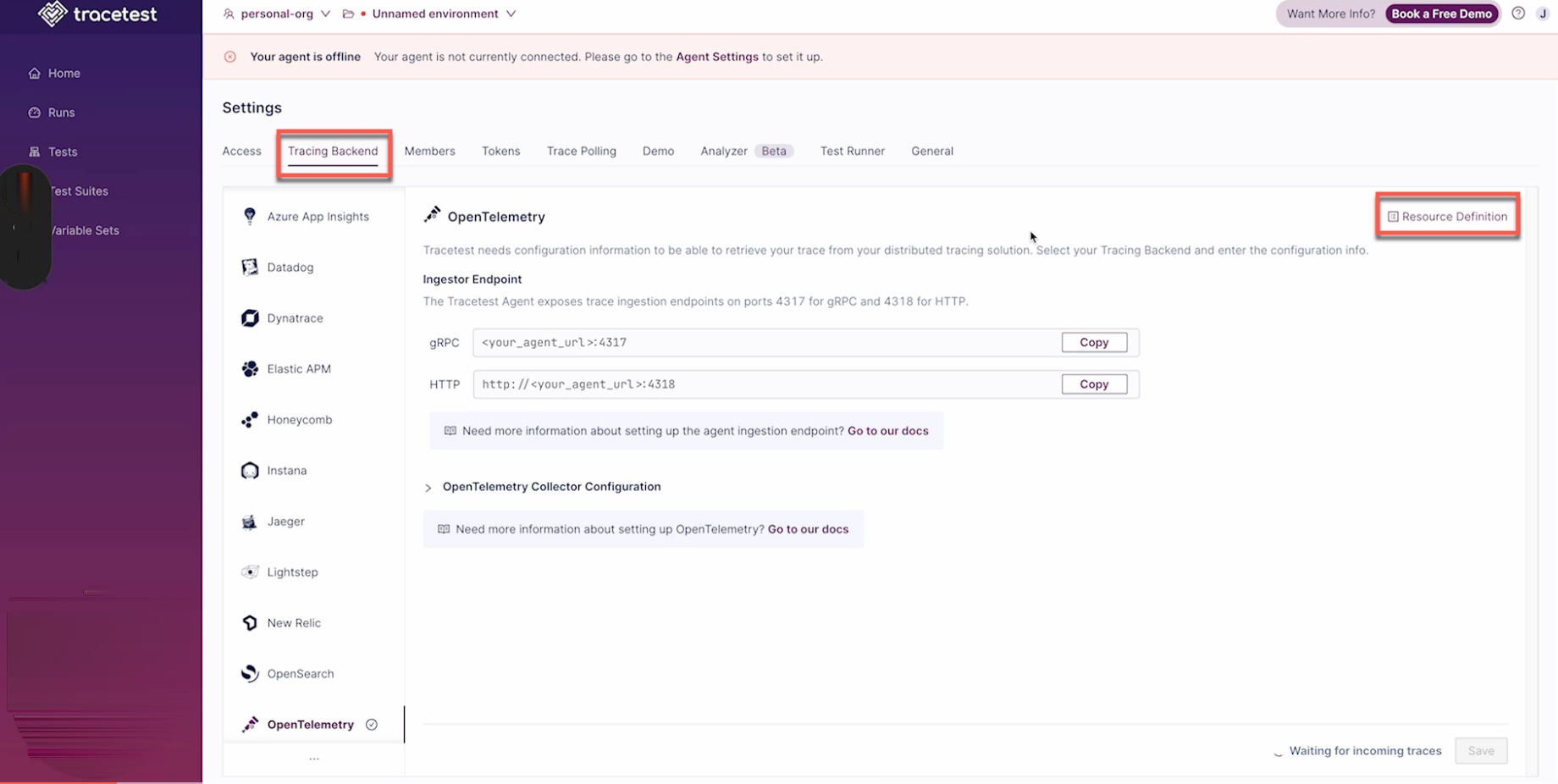
Clicking on the Resource Definition link will open the modal:
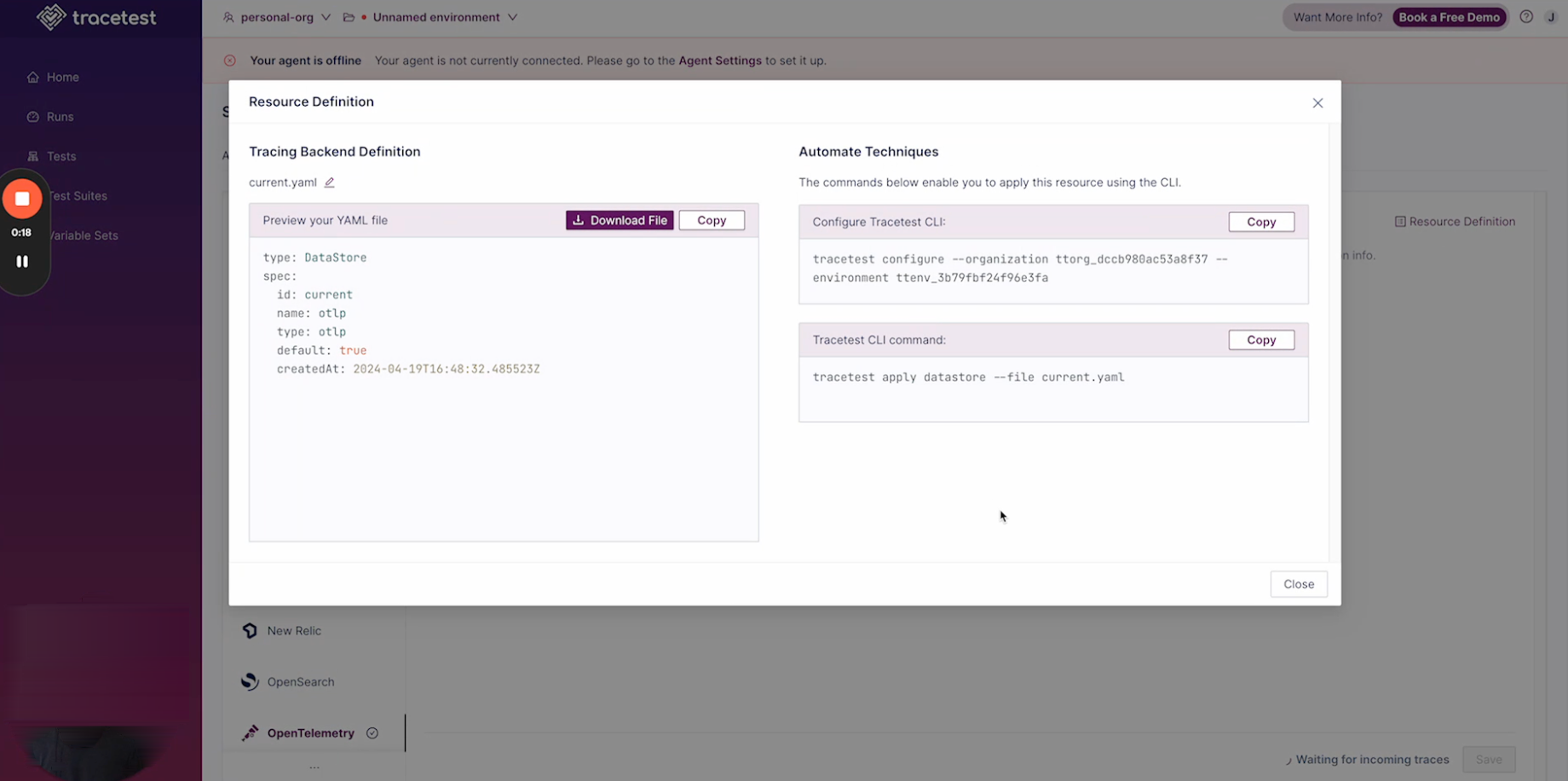
The YAML definition is in the left panel, where you can rename, download or copy the YAML file.
On the right are the automate commands for applying this resource in the CLI.
Trace Polling
Similarly, on the Trace Polling tab, you will find the Resource Definition link for each polling profile in the trace:
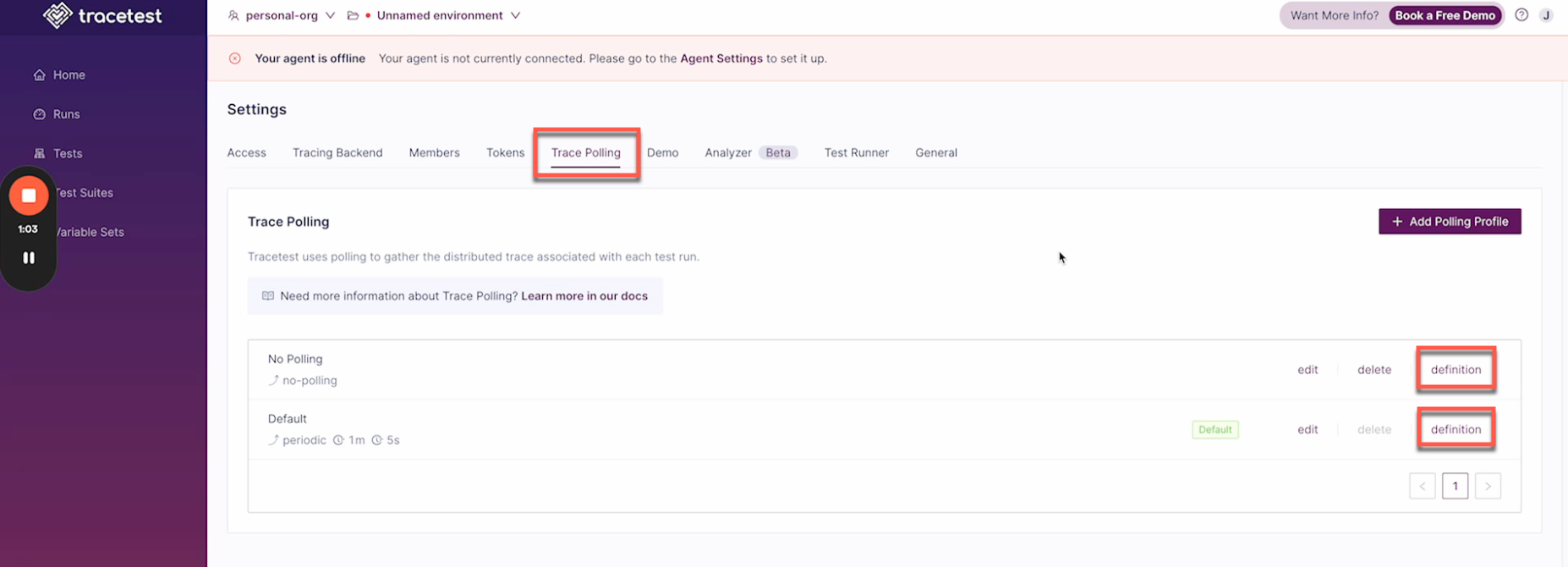
Selecting the Definition link will open the Resource Definition modal:
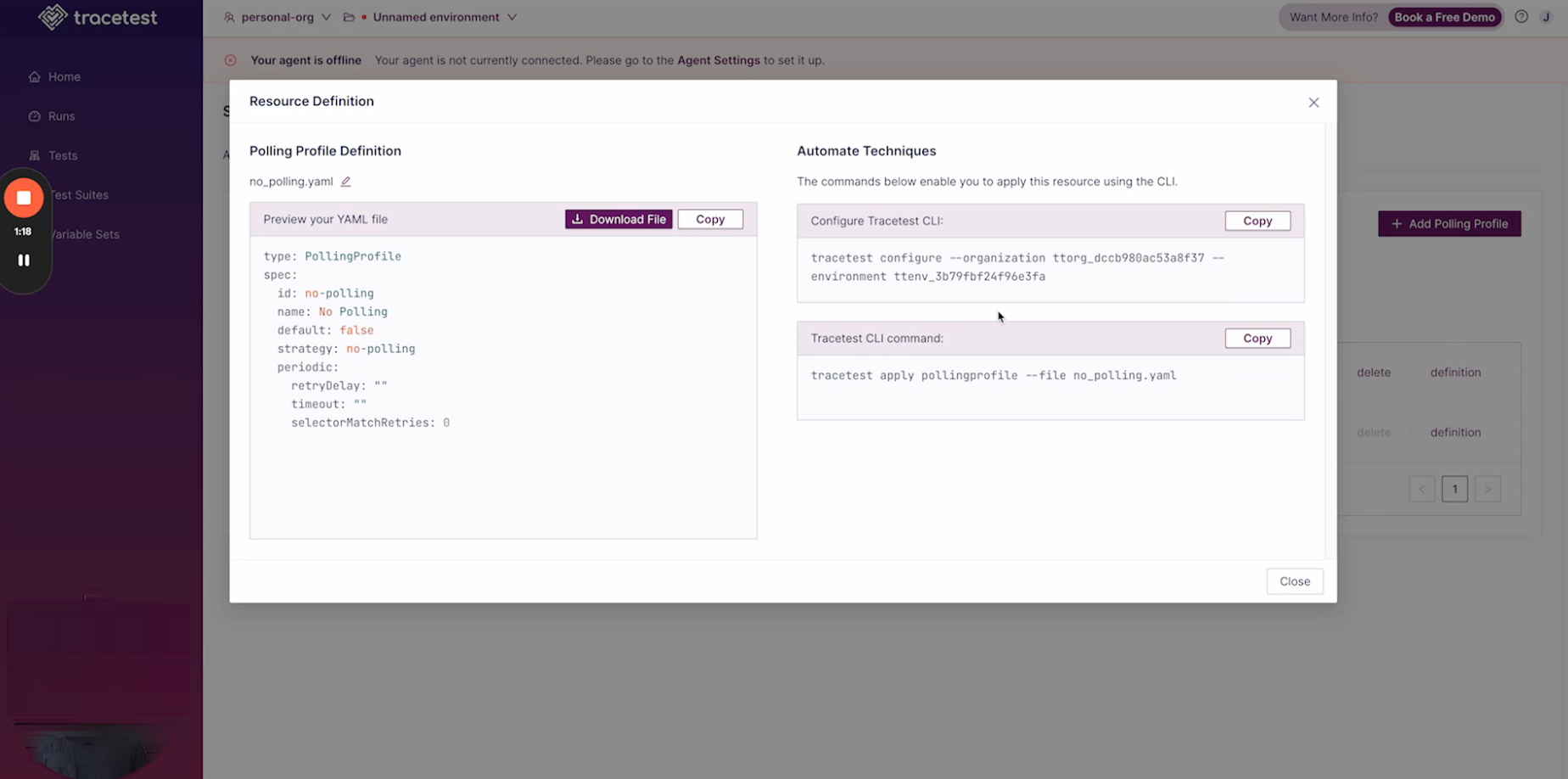
Demo
On the Demo tab, you will find link to work with resource definitions, as well:
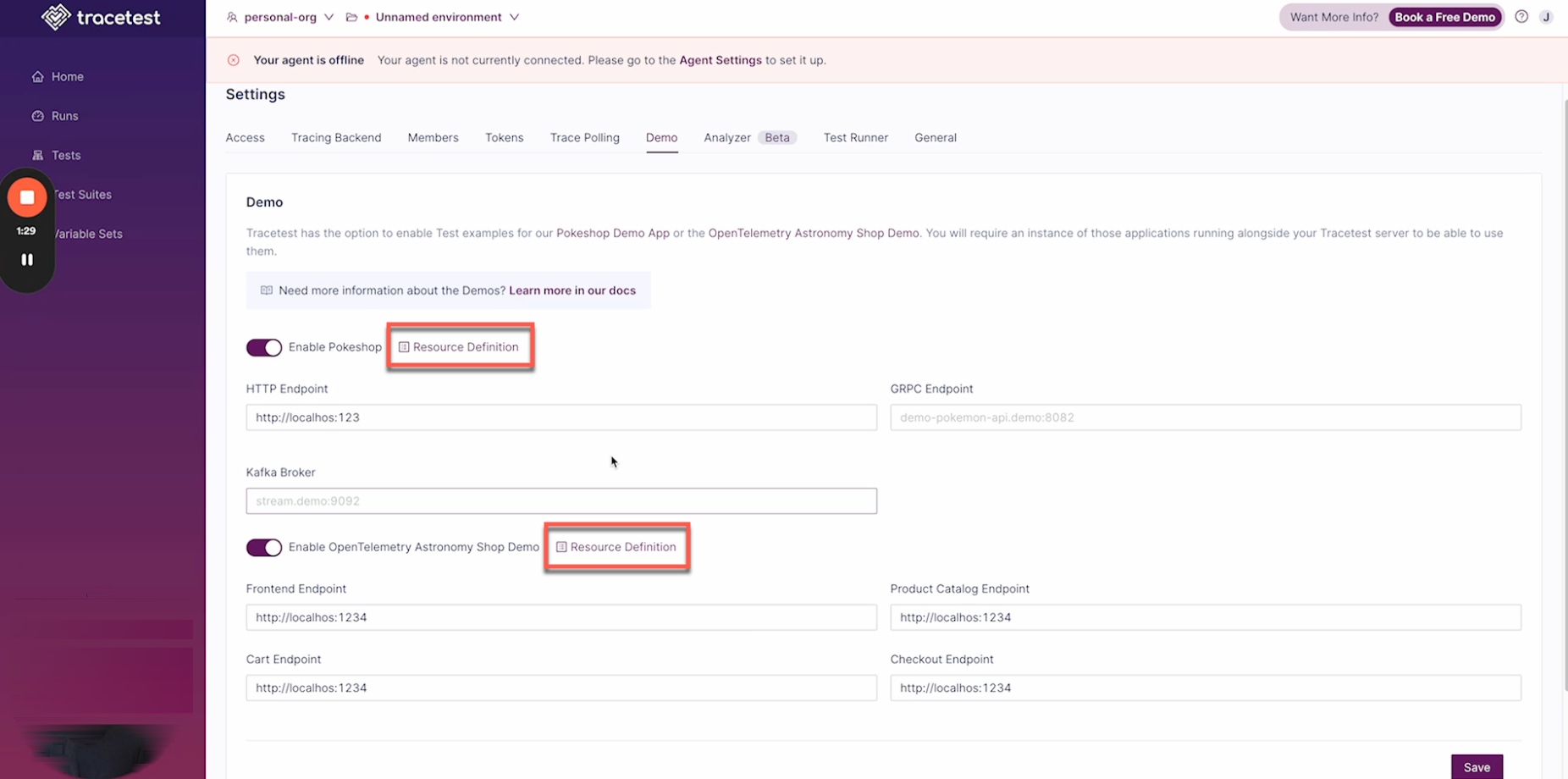
Analyzer
On the Analyzer tab, click on Resource Definition:

The analyzer modal shows one single action.
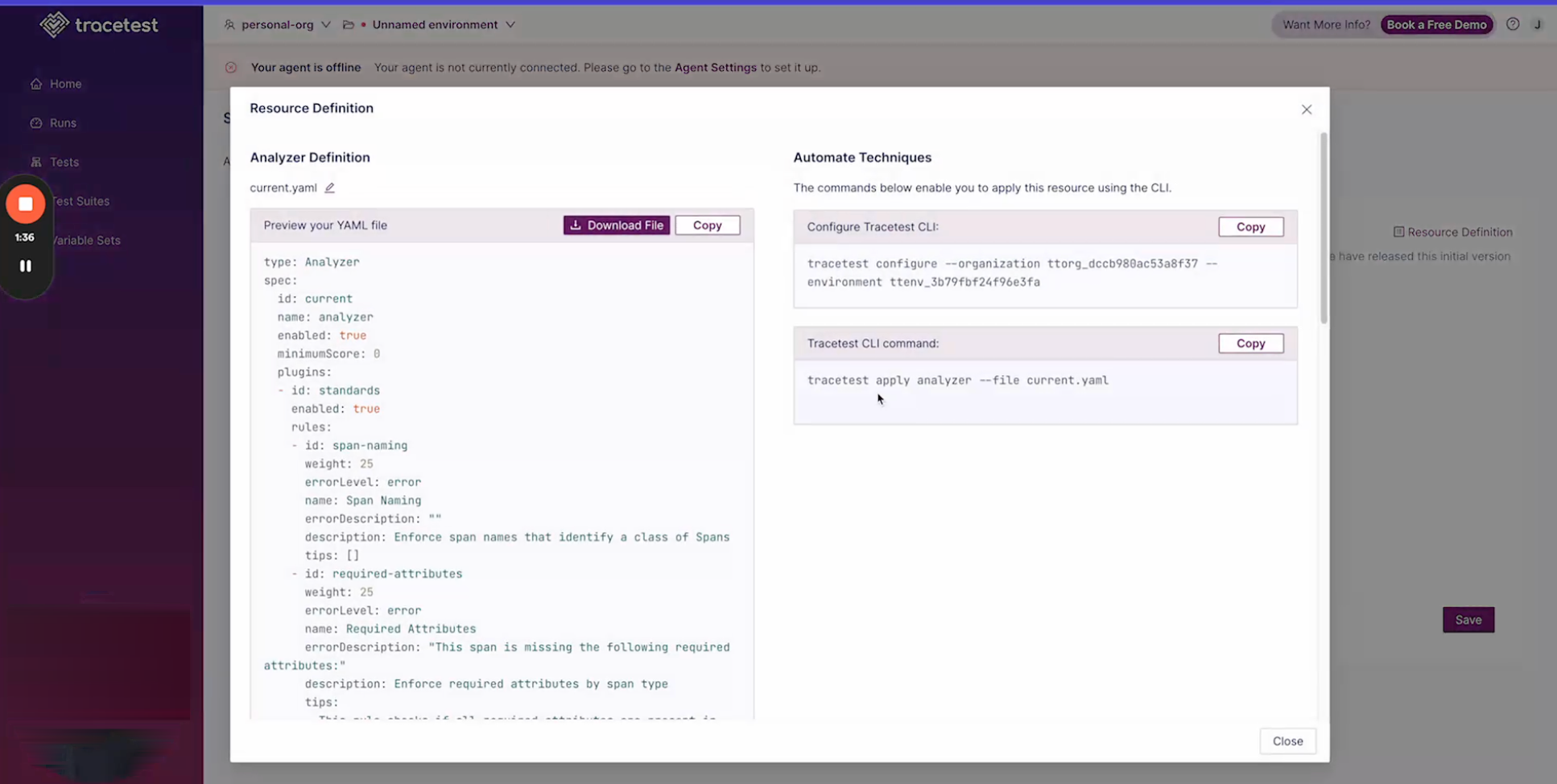
Test Runner
On the Test Runner tab, click on Resource Definition:
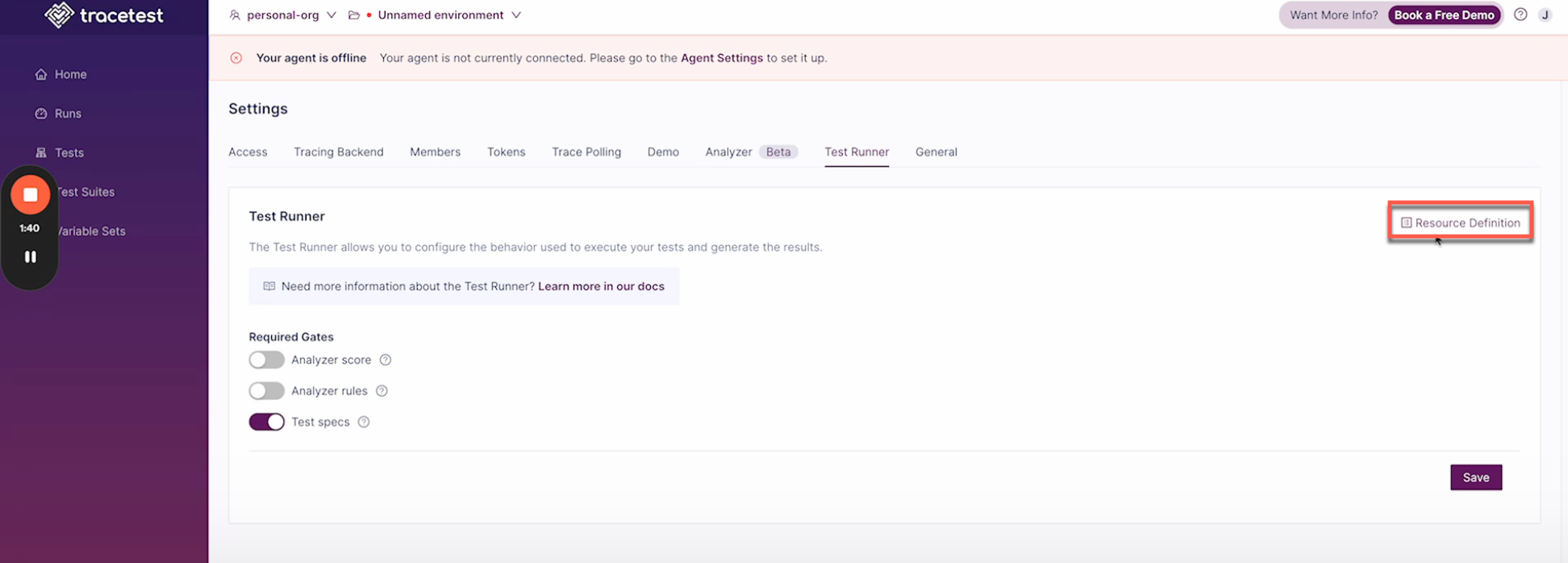
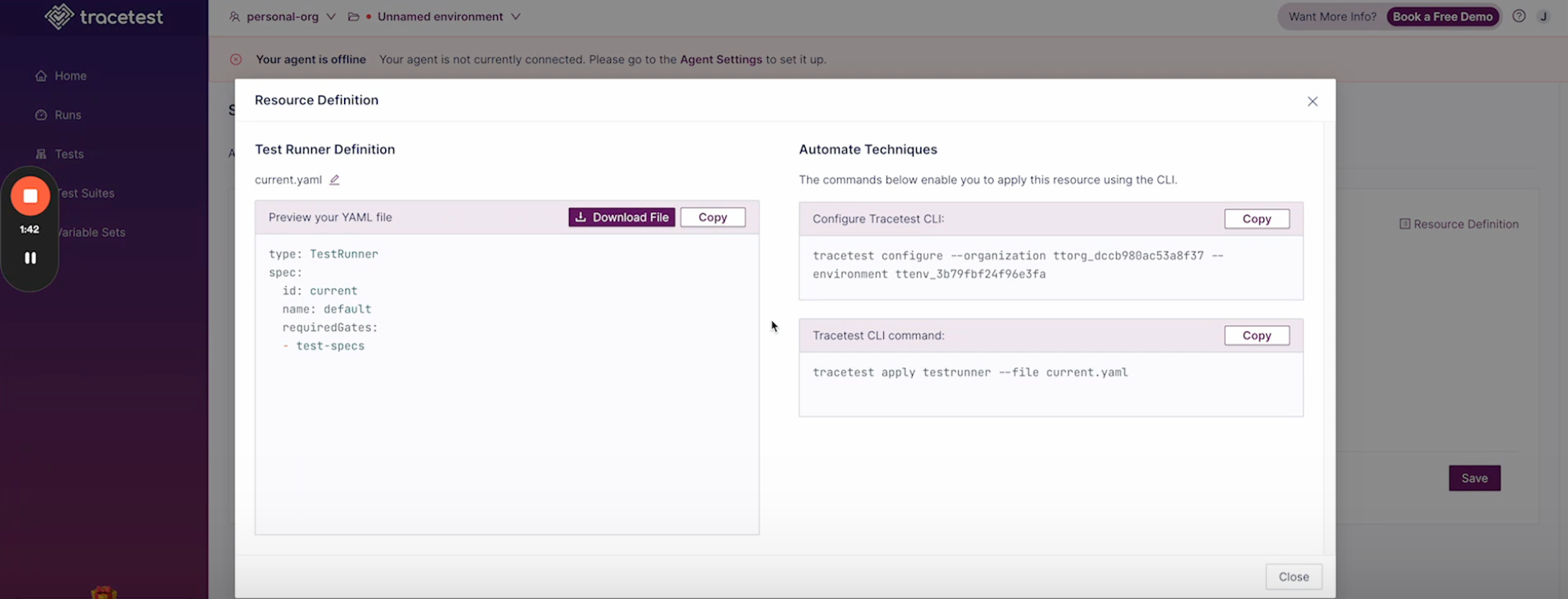
Variable Sets
In the navigation panel on the left of the screen, click on Variable Sets.
This will open the modal for the Variable Set's resource definition:
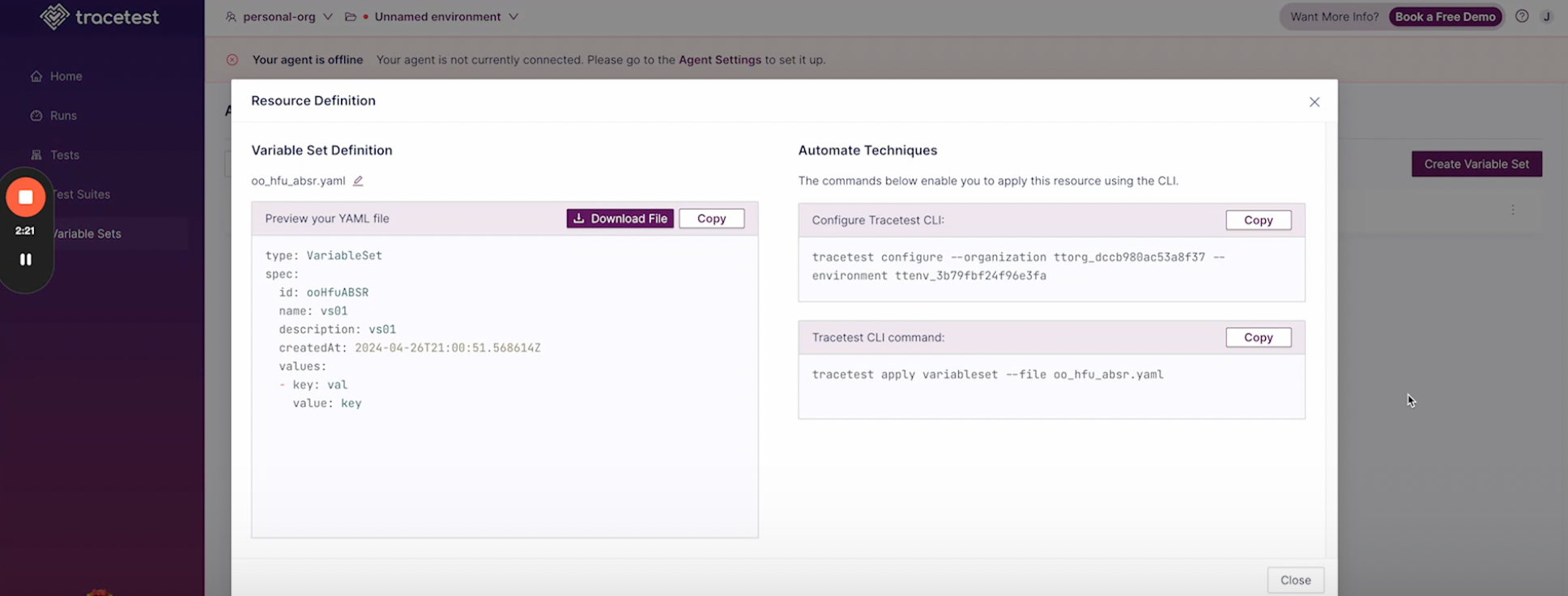
Provisioning Environments
Tracetest allows the creation of an environment from the CLI and provisioning it with any type of resource.
The resources that can be provisioned in an environment are:
analyzerconfigdatastoredemoenvironmentenvironmenttokeninvitepollingprofiletesttestrunnertestsuitevariableset
Use this feature to quickly spin up new environments for integration testing or CI builds.
You can find code examples here. These files are in a folder called “/resources”.
type: Environment
spec:
name: my-demo-env
description: My env desc
resources: ./resources # this is a folder
The apply command for creating this environment:
tracetest apply environment -f ./path/to/environment.yaml
You will now see the created environment and all resources from the resources folder in the Tracetest Web UI.
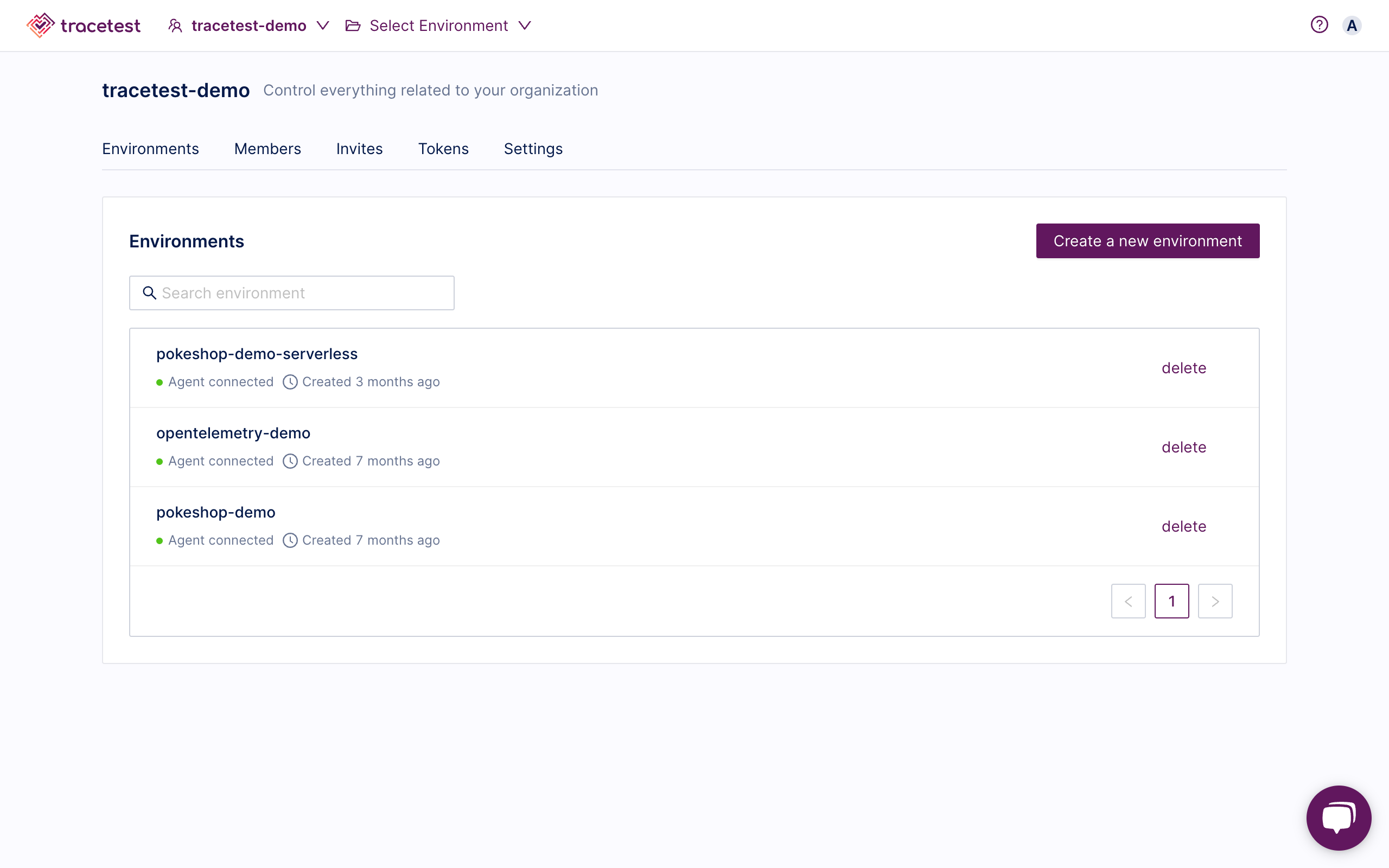

CI Environments
Environments can be created in an automation/CI pipeline without user interaction.
These environments can be generated for PRs or feature branches, when merging code, when deploying code to QA, staging, or beyond.
Role Access
An automated environment can only be accessed by an admin or owner role. As a member role you will see a Send Request button when accessing the environment link.

The admin and owner can grant access via an email they recieve after the request is clicked.
